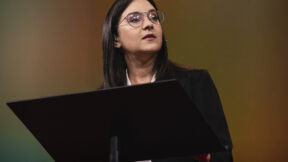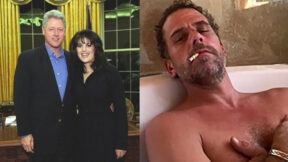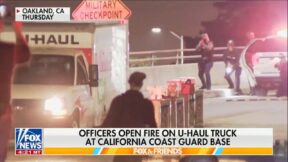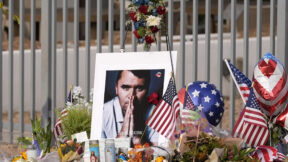Clarissa Ward’s Fearless Reporting in Afghanistan is a Testament to What CNN Used to Be, and an Example of What it Should Be
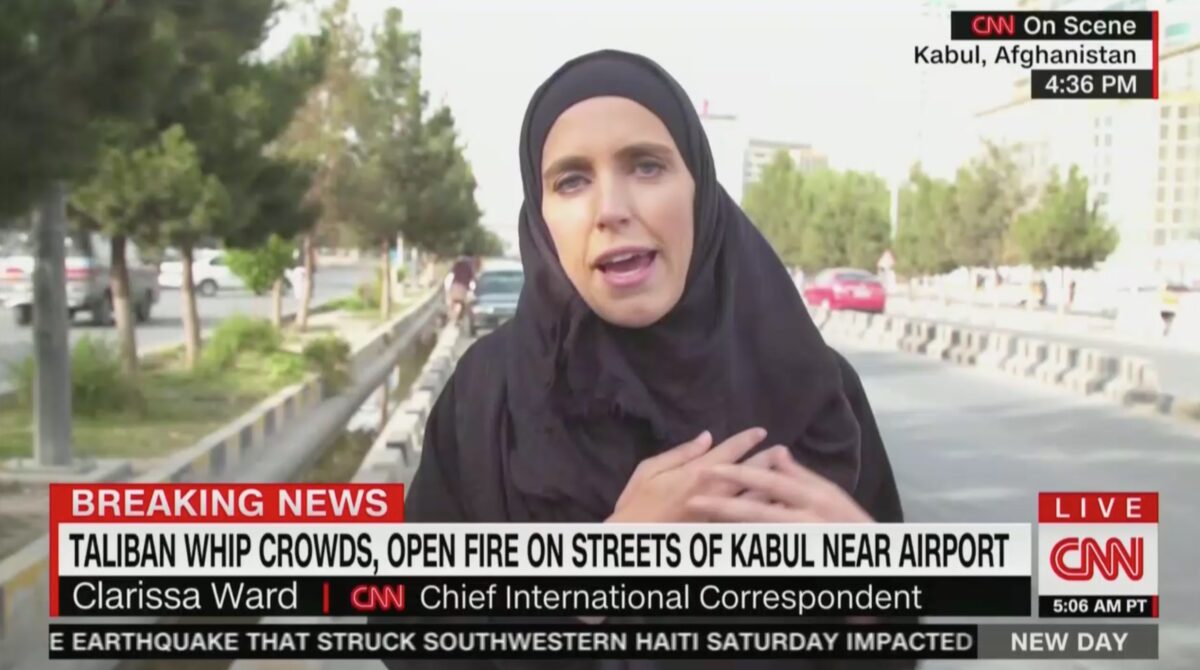
CNN chief international correspondent Clarissa Ward risked her life to fearlessly report on the dire situation in Afghanistan, namely in the capital of Kabul, which has been taken over by the ruthless and oppressive Taliban.
She is a testament to what CNN used to be: A 24-hour news organization showcasing truthful and fearless reporting from all over the world, especially in dangerous places like Afghanistan, in broadcasts watched by millions worldwide from homes to, until recently, airports.
Compare that with what CNN is nowadays. During the Trump era, CNN was part of the “Resistance” that — like their peers in the mainstream media — provided nonstop coverage of the Trump-Russia collusion narrative that turned out to be false according to the Mueller report. This wall-to-wall Trump coverage minimized — or even edged out altogether — other news and events nationwide and globally that viewers outside the coastal bubbles actually care about.
The network has self-righteous figures including Jim Acosta, whose grandstanding during White House press briefings made him look not like a journalist, but rather an activist. He frequently inserted his own opinions into reporting positioned as straight news — an act which regularly elicits rage from CNN reporters towards other outlets, and one which is antithetical to the objective of news journalism. It is especially counter to good reporting when in the White House press room — where the job is to get answers, not create Twitter clips in the hopes of someday getting your own Saturday show.
For example, following a press conference in the Rose Garden, Acosta tweeted, “Trump soiled the WH Rose Garden with that performance. Presidents do not use the Rose Garden in that kind of naked political fashion. That was not a press conference, as the WH described it. It was a campaign rally disguised as a press conference. It was a bait and switch.”
Acosta frequently asked questions on behalf of his own agenda, and not that of the American people. In 2017, during a press conference with then-White House senior adviser Stephen Miller about proposed legislation that would have reformed the U.S. immigration system to one that is merit-based, Acosta quoted the poem on the Statue of Liberty – a theatrical display that disregarded historical context and that the poem by Emma Lazarus did not mention anything about a merit-based immigration system.
While Acosta focused on hot takes, not journalism – a method which more or less reflects CNN’s current ethos – he was not the only offender, even though he was the worst.
CNN called one of last summer’s riots “fiery but mostly peaceful” – an unserious and disturbing perversion of journalism ethics. It denied the reality on the ground of what looked like a war zone where there was looting and burning. And that report was hardly an anomaly. Don Lemon justified those riots while criticizing the Jan. 6 riot at the U.S. Capitol. During last summer’s riots, host Chris Cuomo said, “Please, show me where it says that protests are supposed to be polite and peaceful.” Lemon and Cuomo only cared about the riots when there was the possibility that the riots could hurt then-Democratic presidential nominee Joe Biden in the 2020 election. Additionally, a chyron during CNN’s coverage of the riots last year in Kenosha, Wisconsin, included the words “violent protests” before a new chyron appeared without the word “violent.”
The difference between those shameful standards and the courageous reporting that CNN has done from conflict zones is night and day.
Before the Taliban took over Kabul, Ward was sporting regular, professional dress. After the group took over, she reported on the ground wearing a hijab.
Earlier last week, Ward – who was in a hijab but not covering her face – pressed a Taliban commander on why Afghan women need to cover their face and whether Islam actually requires the niqab, which covers a woman’s entire face.
Ward and her crew were physically threatened multiple times by Taliban members only to thankfully come out unharmed. The Taliban, like any terror or brutal group, has no respect for press freedom. The group has already barred female state news anchors. Ward was under threat by the Taliban not only because she was a journalist covering the dire and repressive ramifications of the Taliban’s takeover of Kabul – where Americans and Afghan allies are trying to reach the airport unscathed – but also due to her gender. Ward and her crew got out of Afghanistan from the Kabul airport on Friday.
In the face of extreme danger, Ward has asked questions that the Taliban might not want being asked and broadcast to the world. Ward asked everyday Afghans, including ones who said they helped the United States during the almost-20-year war, for their reactions amid the drastic change of life with the Taliban in charge. She also interviewed Taliban fighters with questions they may not like, for example, about women’s rights. She asked one Taliban member, “A lot of people are very frightened that you might engage in revenge attacks against security forces.” Ward’s journalism could have easily gotten her attacked or, even worse, killed.
In addition to showing the rest of the world what Afghanistan is like at this moment, Ward’s reporting provided a reminder of the kind of journalism we cannot take for granted.
Reporters, along with producers, camera crews, and more, risk their own lives to bring the truth of conflict zones out to the world. They do this in places where freedom of the press is often not respected, where reporters are as unwelcome as the truth. Clarissa Ward and her colleagues in Kabul have set a new example of the kind of reporting that turned CNN into a global presence.
When 24 hour cable news came out, it was seen almost as ridiculously as it was parodied in Anchorman 2. But in the first Gulf War, Americans were struck by, and glued to the live images directly from the war zone. Unlike previous war reporting, this was real time and the impact on not just the public but the war itself cannot be overstated. Wolf Blitzer and Bernard Shaw became household names.
Shaw, along with John Holliman and Peter Arnett, reported from Baghdad as the skies over the Iraqi capital were, as Shaw put it, “illuminated” by the incredible streaks of light as rockets were fired, bombs were dropped. It captured every eye. The team was able to broadcast the latest due to a two-circuit private phone line that “ran across the Iraqi desert floor” and connected to a “microwave transmission dish in Amman” – a setup known as a four-wire – “which then relayed phone signals by satellite to CNN headquarters in Atlanta,” according to The Los Angeles Times. This allowed for CNN to not have to deal with what were unreliable “standard switching systems of a normal phone system,” according to the Times. This cheap but effective technology gave CNN an advantage over its competitors, which didn’t have a four-wire, to broadcast to the world the war that eventually pushed away Saddam Hussein from Kuwait.
Amanpour, who also covered the Gulf War for CNN, famously covered, from Sarajevo, the Bosnian War and the genocide of Bosnian Muslims by Serbians. She interviewed the infamous Serbian commander Ratko Mladic, known as “the Butcher of Bosnia,” who detested Amanpour’s reporting of the war, saying it made him “very angry.”
Sadly, that kind of crucial work has been amiss until the past couple weeks — as exemplified by Ward on the ground in Kabul. CNN would be wise to follow Ward’s gold standard of fearless and truthful reporting and holding leaders accountable regardless of political and ideological affiliation. Unfortunately, these days, Ward is an exception at CNN and not the norm.
This is an opinion piece. The views expressed in this article are those of just the author.
